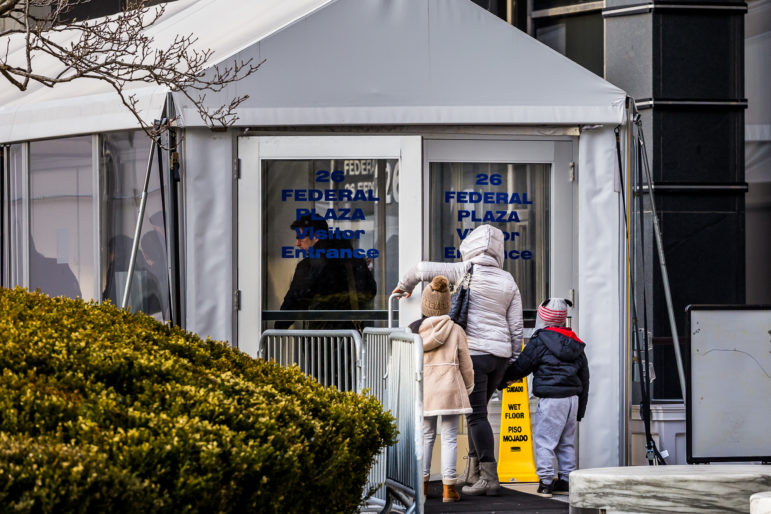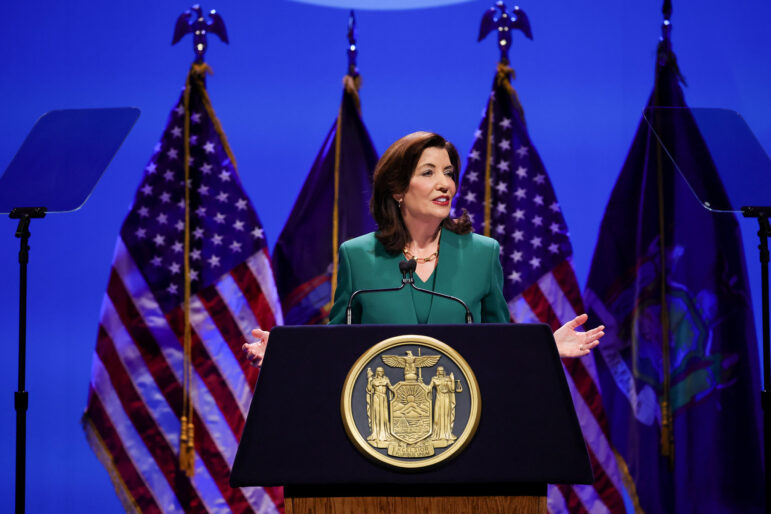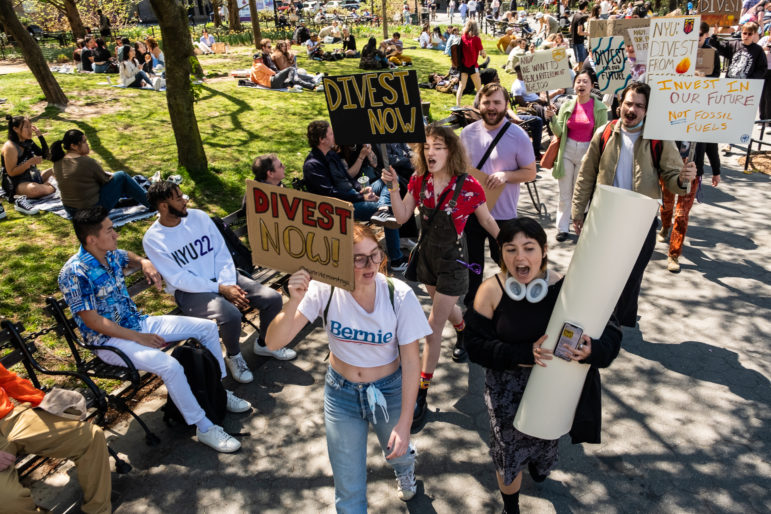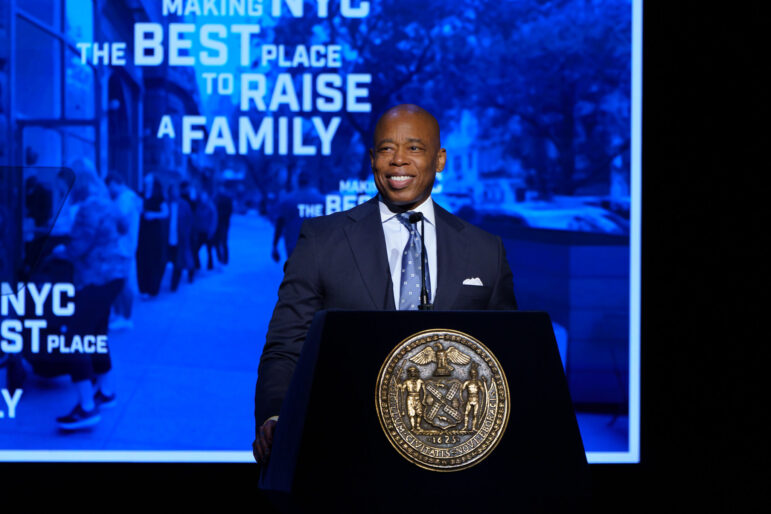“How many of you know the dollar amount you’ll need to retire?” Greg Jones Sr. asks a group gathered at the Bridge Street Development Corporation’s Bedford-Stuyvesant offices. Averted eyes are the only response. People in here are artists, teachers, lawyers and administrators. A few are unemployed, but most have comfortable incomes. What they don’t have, however, are what Jones is here to help them acquire: assets.
“You can’t save in 15 years what you could have saved in 30,” he says. “You’ll never get the interest back.” His example: One person starts at age 22, investing $166 every month until he’s 34. Then he stops putting money in and just lets the gains accumulate until retirement. The other doesn’t start until he’s 34, and invests until he retires at 65. Even though he puts in money for more than twice as many years, the late investor will never gain as much as the early one.
Hearing this, student Monifa Reel laughs and shakes her head. “In college, why didn’t they tell us to start putting $166 a month into an IRA rather than offering us all those credit cards?” she marvels.
The 12-week class teaches financial literacy: the skills to manage money. On the surface, it’s much like courses commonly taught at credit unions and community organizations. But the Bridge Street class has an unusual agenda–one that weds community revitalization with the current craze for personal investing.
“We call it financial literacy, but we’re really about wealth creation,” says Sydney Wayman, director of economic development for Bridge Street. To that end, the course teaches asset protection, debt management and financial planning, all of it setting students up for intensive sessions focusing on investment strategies and homebuying.
Chief Executive Officer Colvin Grannum hopes that the class will help change Bed-Stuy by allowing residents to buy homes, start businesses and end the cycles of debt that have kept them–and the neighborhood–from moving forward. Good jobs alone can’t do the job, Grannum points out. “We have lots of young people who are making $60,000 or $70,000, but they already have blemishes on their credit.” Many start taking on credit card debt in college. Others have no savings, making them ineligible for loans. “A loan is key to the acquisition of assets,” he says. “And assets, in our country, are the key to economic well-being.”
Assets are also central to Bridge Street’s own success. The group plans to build 24 apartments for sale in the next three years. Each will require a down payment of $20,000. Many Bed-Stuy residents have nothing close to these resources, which is why fewer than 30 percent of residents are homeowners–less than half the national average. The problem is not a lack of income as much as a lack of wealth. “Unfortunately, when you control along racial lines, when you control for income and education, many African-American people have a much lower net worth than comparably situated non–African Americans,” observes Grannum. In 1990, black Americans owned only 1 percent of the nation’s wealth.
Grannum also believes that absentee ownership destabilizes the community–a problem that is becoming worse as property values shoot up. “If you don’t own, you may be asked to leave. We want to help people who live here now to stay here,” he says. Wayman points out that a neighborhood of renters loses out on the benefits of rapidly rising real estate values: “All the wealth,” he says, “is being exported out of the community.”
But there are pitfalls to getting out from behind, and Bridge Street itself has brushed with one of them. Jones is a freelance financial advisor for Citigroup’s Primerica division, which has come under fire from economic justice activists for aggressively marketing inferior financial products to moderate-income people. During the class, Wayman called time-outs when Jones came uncomfortably close to making sales pitches, but Jones urged students to consult with him later. (Wayman says he brought Jones in as a fellow congregant from Bridge Street AME Church, where Jones helped members develop debt-management plans.)
Grannum is keenly aware that his community is a desirable market for companies like Primerica. “In the past, one of the barriers to educating people in financial literacy was that the only people talking to them about it were people who had something to sell them,” he says. “That is something that we are trying to get away from.”
Students say they’re desperate to get information anywhere they can. Kim Booth, a 28-year-old Brooklyn native, works full time but has struggled with chronic debt. “Growing up, the school system did not teach us this, college did not teach us this,” she says. “Even when you get a job, you don’t learn this.” She says that her only financial education has come from magazines and television. When she was growing up, her mother was focused on providing for four children as a single parent. Now, Booth is particularly excited to learn about investing. “I want to be able to retire at 50, or travel. To be able to put my kids through college. I want the American dream.”
Dara Mayers is an editor at Streetmail.com. Additional reporting by Amanda Bruscino.








